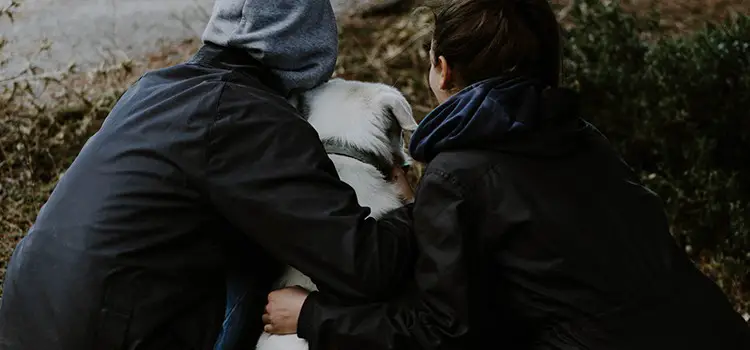The saying, “It’s hard to teach an old dog new tricks,” isn’t just a common turn of phrase. The older the dog, the more difficult it may be to teach him a new trick, command, or procedure. The best way to ensure your grown Lab knows basic commands and procedures is to train the Lab while it is a puppy.
Labrador puppies are able to learn commands as soon as you bring him home! It is encouraged to begin training your puppy as soon as possible with basic commands through positive reinforcement.
It is important to keep in mind that Labrador puppies are playful animals that will occasionally fall short during training.
Following these Labrador puppy training tips will help guarantee that your Lab puppy remembers procedures and commands throughout his life.
1. House Training
Puppies are not born knowing they are going to live indoors and potty outdoors. Training your puppy to understand that he cannot relieve himself inside is the most essential lesson your puppy will need to immediately learn.
In order for your Lab puppy to associate certain words with going potty outside, you will need to frequently repeat the words and actions together during training.
For example, to house train your puppy to potty outside, ask the puppy if he needs to go potty and immediately take the puppy outside to the grass.
Frequently use commands while outside, such as “go potty,” for your Lab puppy to associate outside with potty. When your puppy successfully goes potty outside, give him immediate praise and a reward.
Remember: your puppy will have an accident in the house. It is inevitable. Do not punish the puppy for having an accident. Instead, immediately take the puppy outside and reiterate the words “potty” and “outside.”
2. Crate Training
Labradors enjoy having a safe space of their own, and crates are a common resource for giving a dog this designated safe space.
Additionally, your Lab puppy may need to be crated for short periods of time during the day; therefore, your puppy will need to be trained for spending time in the crate.
Introduce your puppy to the crate so that he is familiarized with the area and not afraid of it. Leave the door open so that your puppy can go in and out at ease. Place a treat inside the crate and positively tell your puppy to go in the crate.
Once inside, shut the door for a brief time; long enough for the puppy to eat the treat while the inside the closed crate. Making the puppy’s crate a safe, enjoyable place to go will cause your puppy to visit the crate more often and spend more time inside.
3. Puppy Biting
As puppies gain new teeth, they will want to chew frequently to fulfill that craving, and puppies are not picky about what they chew! This means they can easily choose your favorite pair of shoes, simply because it gives them the exact relief they need.
To keep your puppy from biting on you or chewing your favorite pair of shoes, give your puppy a designated toy for chewing.
The Nylabone Puppy Chew Bone is the perfect chew toy for your new puppy. The design of the bone is gentle, so it soothes your puppy’s teeth and gums, as well as implements proper chewing habits for your puppy to learn.
Give your puppy designated chew toys or bones for the puppy to put into practice proper chewing habits.
4. Lessen Distractions
Puppies are brand new to this big world, so they may be paying attention to everything happening around the puppy rather than you.
The best way to get your puppy’s attention is to begin training in an area that is distraction-free. The fewer distractions, the more your puppy will pay attention to you and only you.
5. Positive Reinforcement
Training your puppy to follow commands through praise and reward treats will make your puppy want to continue learning and following through with commands. Do not punish the puppy if he does not carry out the command he is being trained.
Puppies that are punished during training can lose the desire to be trained. Additionally, even puppies as gentle in nature as Labradors can become aggressive through punishment and negative treatment.
6. Consistency Is Key
If you are teaching your Lab puppy a trick, procedure, or command, pick a word and stick with it. For example, in house training, choose the word or phrase and continue using it.
Don’t start by saying “go potty” and then change to another phrase like “go tinkle.” Just because we know that those phrases mean the same thing doesn’t mean your puppy will. Stick with a phrase and don’t deviate.
7. Keep it Simple and Enjoy the Moment
Don’t overexert yourself, and especially your puppy. Your Labrador puppy will learn best in short, easy lessons. These lessons can be around 10 minutes long and can be practiced daily.
Your puppy will not be this size forever. It truly flies by! The best way to successfully train your puppy to learn life’s skills and commands is to make the training as enjoyable as possible. Enjoy this time with your puppy.
These Labrador puppy training tips will help give you the tools and resources you need to begin successfully developing your energetic puppy into a well-behaved Lab!
Reminders
Don’t get frustrated. Your puppy can feed off of your temper and mood. If you are upset, your puppy can become upset.
Do not punish the puppy. The puppy will not always perform the command being asked. The puppy may be tired or distracted. Punishing the puppy for underperforming will keep the puppy from wanting to continue to learn.
Do use rewards, treats, and praise. Positive reinforcement will keep your puppy wanting to learn and perform the tasks being asked. A small “good boy” with petting and a treat is the most basic, positive method to successfully train your Labrador puppy.

